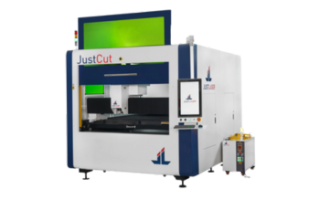Laser-cut aluminium is usually used as a basic product for casing, in environmental technology, in plant construction and for other construction required in industry. Aluminium is a soft metal. Like gold, silver, zirconium, copper, and bronze, aluminium belongs to the group of non-ferrous metals that can be cut using a laser.
The laser technology from JustLaser offers many benefits when it comes to industrial laser cutting: With a manageable level of investment, you’ll own a high-quality device that can process both hard and soft metals without any problems. Thanks to individual configurations, a JustLaser laser machine facilitates a wide range of possible applications for industrial use. Modern features and integrated software enable optimal control of the metal cutting process. Cutting aluminium up to 4 mm thick with a laser is considered a particularly precise and clean way of processing metal. The modulation frequencies of the laser can be varied individually between 500 and 50,000 Hz – the result is a perfect cut quality with a slag-free bottom edge. The cutting pattern, which you create in your old program, can be imported easily and sent to the laser.
WHICH METALS CAN BE CUT WITH A LASER?
In addition to aluminium, the following metallic materials used in industrial production are suitable for laser cutting:
- Non-ferrous metal (copper, brass, bronze, tin, zinc zirconium, etc.)
- Precious metals (gold, silver, platinum)
- Titanium
- Stainless steel
- Construction steel


